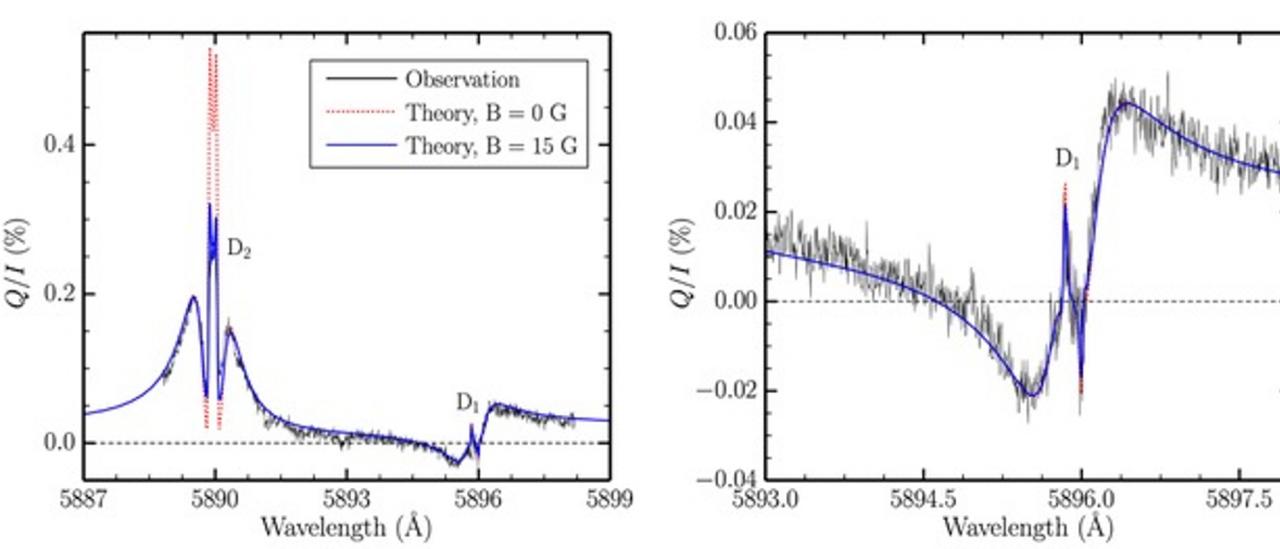In 1998 the journal Nature published a seminal letter concluding that the mysterious polarization (a particular property of light) that had been recently observed in the solar sodium D1 line implies that the solar chromosphere (a very important layer of the solar atmosphere) is practically unmagnetized, in sharp contradiction with common wisdom. This paradox motivated laboratory experiments and theoretical investigations which, instead of providing a solution, raised new issues and even led some scientists to question the quantum theory of radiation-matter interaction. Here, we have carried out the most complete theoretical modeling of the polarization signals of this line ever attempted, accounting for the joint action of many complex physical mechanisms that take place when atoms and photons interact in the presence of magnetic fields. We have been able to reproduce the enigmatic observations of the D1 line polarization, in the presence of magnetic fields in the gauss range. This represents the solution to such enduring paradox, and opens up a new window for exploring the elusive magnetic fields of the solar chromosphere in the present new era of large-aperture solar telescopes.
Linear polarization pattern of the solar D1 and D2 spectral lines, comparing observations to the results of the modeling (see legend). An excellent agreement with observations is found when assuming that the solar atmosphere is significantly magnetized.
Advertised on
Authors
Ernest
Alsina Ballester
L. Belluzzi
Javier
Trujillo Bueno
References



